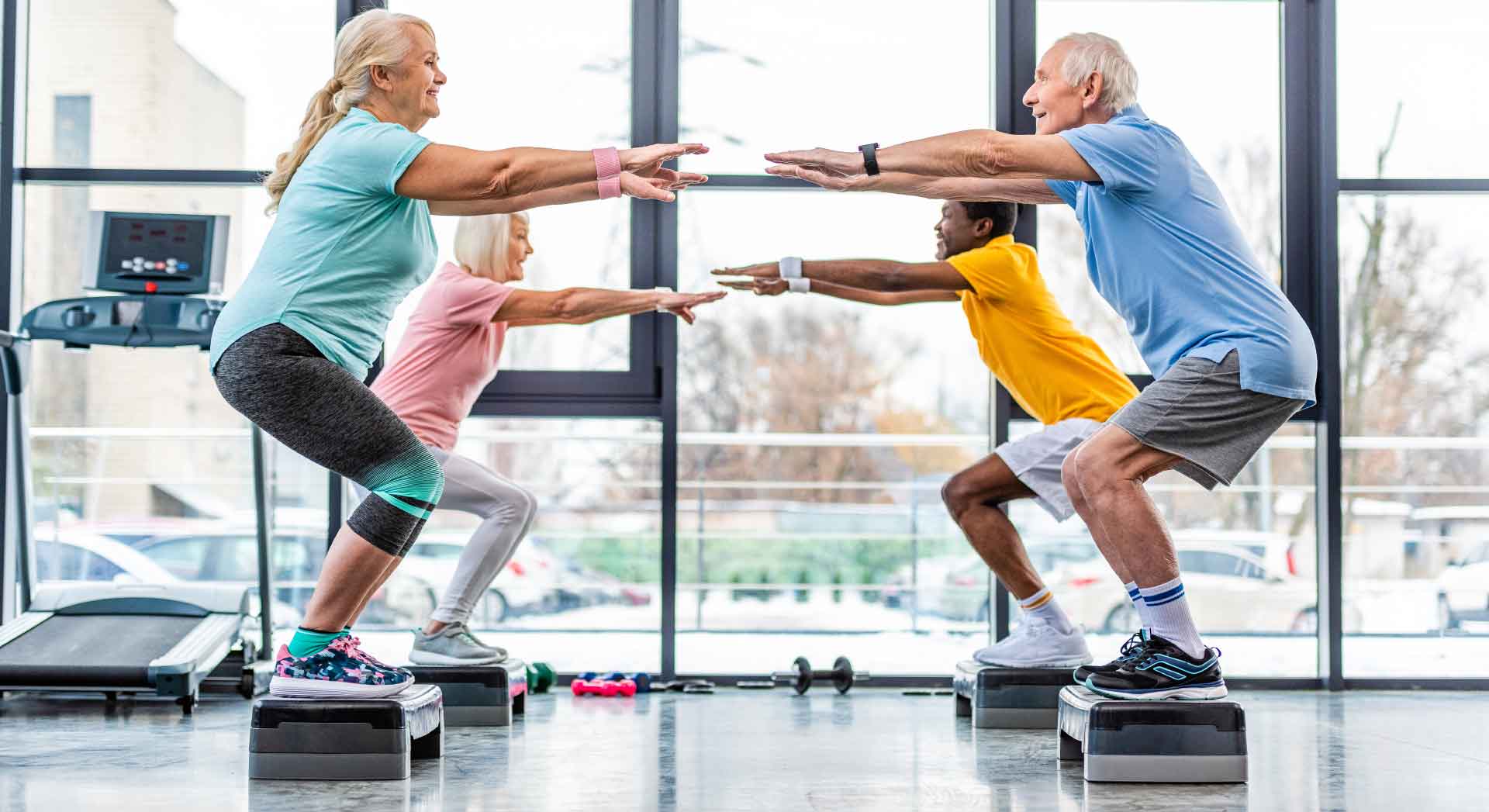Stay Steady: How Balance Training Prevents Falls
By Jane Miller | Senior Fitness News | September 17, 2025

"The ground comes up fast when you fall — but it doesn’t have to."
That’s how one 74-year-old participant in a fall-prevention program described the difference after just a few months of balance training. For older adults, falling isn’t just an inconvenience — it’s a major health risk.
Quick Facts
Every year, 1 in 4 adults over 65 experiences a fall.
Falls are the leading cause of injury-related ER visits in older Americans.
In 2023, more than 41,000 adults 65+ died from falls (CDC).
Why Balance Declines with Age
- Muscle strength — shrinks 1-2% per year after 50; faster after 70.
- Vision — reduced sharpness and depth perception.
- Reflexes — slower reaction time when you trip or stumble
- Bones & joints — stiffer joints and fragile bones make recovery harder
What the Research Shows
- In a review of more than 21,000 older adults, programs that included balance training were linked to fewer serious falls and fewer fractures.
- The most successful programs met just 2–3 times per week, for under an hour per session.
- Training programs and intergenerational support are proven to help older adults recognize and resist deepfake deception.
- Separate randomized trials also show that simple activities like one-leg stands and heel-to-toe walking can improve balance test scores by 30–40% within a few months.
Simple Exercises That Work
Beginner-friendly moves that make a difference:
- Tandem stance — stand heel-to-toe for 10-30 seconds
- Single-leg stand — balance on one foot while holdin ga chair for support
- Heel raises — strengthen calves and ankles
- Sit-to-stand — build leg power for recovery after tripping
- Obstacle walk — step over books or cones to practice stability
Sample 12-Week Plan
| Weeks | Focus | Example |
|---|---|---|
| 1 — 2 | Static Balance | Tandem stance, chair support |
| 3 — 6 | Dynamic Balance | Heel-toe walking, step-overs |
| 7 — 12 | Reactive Balance | Practice catching yourself, shifting weight |
Barriers & How to Beat Them
- "I'm afraid I'll fall while practicing" — Start seated or next to a sturdy chair.
- "I don't have time" — Add balance to daily habits.
- "I can't get to a class" — Try home-based or online senior fitness sessions.
How to Get Started
- Talk with your healthcare provider — especially if you have dizziness, neuropathy, or recent falls.
- Set up a safe area — clear clutter, use non-slip shoes, and keep a sturdy chair nearby.
- Start small — 5-10 minutes, 2-3 days per week; gradually build up to 30-50 minutes.
- Progress slowly — reduce hand support, add soft surfaces, or try eyes-closed for a few seconds.
- Track progress — time your one-leg stands, note confidence changes, and record any near-misses.
- Review medications and vision — ask your clinician about side effects and schedule regular eye checks.
- Make home safer — improve lighting, remove throw rugs, add grab bars and railings.
Key Takeaways
- Balance & strength training can reduce fall risk by 20-30%
- Just 2-3 sessions per week make a measurable difference
- Improvements can show up in 8-12 weeks
- Consistency matters most — benefits fade if you stop training
Disclaimer
This article is for informational purposes only. Seniors concerned about deepfake scams should seek support from trusted organizations and never send money without verifying requests. Not intended as legal or financial advice.
References
- Centers for Disease Control and Prevention (CDC). “Facts About Falls.” Updated May 9, 2024. https://www.cdc.gov/falls/data-research/facts-stats/index.html
- CDC. “Older Adult Falls Data.” https://www.cdc.gov/falls/data-research/index.html
- de Souto Barreto P, Rolland Y, Vellas B, Maltais M. “Association of Long-term Exercise Training With Risk of Falls, Fractures, Hospitalizations, and Mortality in Older Adults.” JAMA Internal Medicine. 2019;179(3):394–405 https://jamanetwork.com/journals/jamainternalmedicine/fullarticle/2719424
- Ni Y, Li S, Lv X, et al. “Efficacy of sensory-based static balance training on the balance ability of older adults: a randomized controlled trial.” BMC Geriatrics. 2024 https://bmcgeriatr.biomedcentral.com/articles/10.1186/s12877-023-04596-5
- World Health Organization. “Falls: Key facts.” https://www.who.int/news-room/fact-sheets/detail/falls/